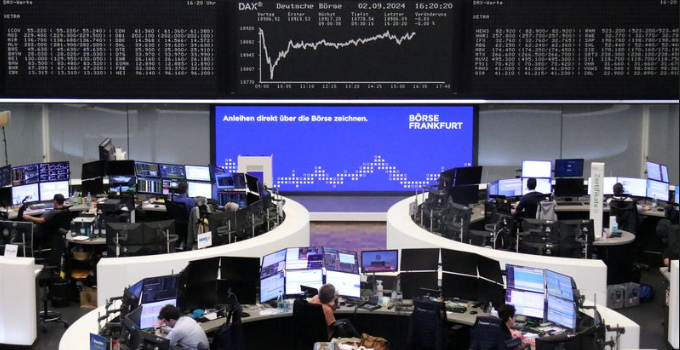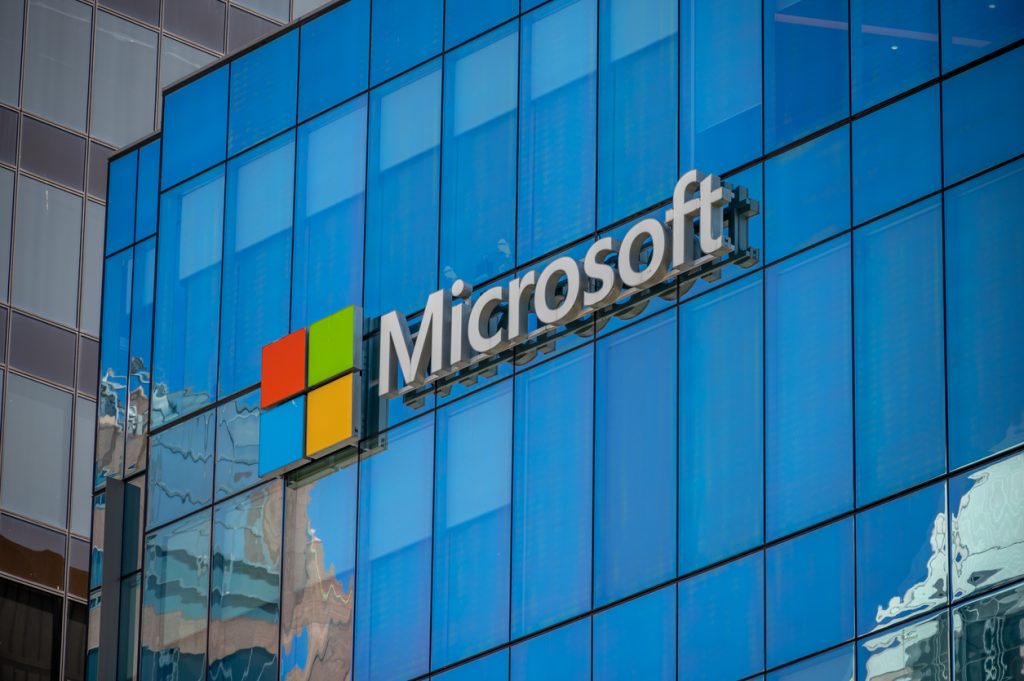
Date Issued – 17th September 2024
European Stocks Edge Higher as Markets Brace for Fed’s Key Policy Meeting
European stocks posted modest gains on Tuesday, with investors cautiously optimistic ahead of the Federal Reserve’s highly anticipated policy-setting meeting, which begins later today. By 07:05 GMT (03:05 ET), Germany’s DAX rose by 0.4%, France’s CAC 40 gained 0.5%, and the U.K.’s FTSE 100 climbed 0.8%. Market sentiment suggests a shift towards a more dovish stance from the Fed, raising expectations of a potential rate cut.
All Eyes on the Federal Reserve Meeting
The Federal Reserve kicks off its two-day meeting today, with markets widely anticipating the first rate cut in four years to support economic growth. While uncertainty lingers over the scale of the rate reduction, many traders are betting on a more aggressive 50 basis point (bps) cut rather than the more traditional 25 bps. According to CME FedWatch, there is a 68% likelihood of a 50 bps cut, while a 25 bps cut has a 32% chance. Additionally, policymakers at the Bank of England and the Bank of Japan are set to meet later this week, making it a pivotal moment for global monetary policy.
German ZEW Survey and U.S. Retail Data Under Scrutiny
Before the Fed’s decision, market participants are watching the release of Germany’s ZEW economic sentiment index, which is expected to show a slight decline as Europe’s largest economy continues to face headwinds. Meanwhile, U.S. retail sales data for August is projected to show a month-on-month contraction, but investors may discount the report in light of a possible rate cut by the Fed.
EssilorLuxottica Extends Partnership with Meta
In corporate news, shares of EssilorLuxottica (EPA) rose 0.5% after the eyewear giant announced an extension of its partnership with Meta Platforms (NASDAQ). The companies signed a new long-term agreement to continue developing smart eyewear into the next decade. Their collaboration, which began in 2019, has produced two generations of Ray-Ban-branded smart glasses, combining fashion and technology.
Kingfisher’s Shares Surge Following Profit Outlook Upgrade
Kingfisher (LON) saw its stock rise over 5% after the European home improvement retailer reported flat first-half profits, which were impacted by weak demand for large discretionary purchases. However, the company raised its full-year profit outlook, providing a boost to investor confidence.
Crude Prices Strengthen as Hurricane Disruptions Continue
Oil prices moved higher on Tuesday, driven by ongoing disruptions to U.S. crude production following Hurricane Francine. At 03:05 ET, Brent crude rose by 0.5% to $73.12 per barrel, while U.S. West Texas Intermediate (WTI) gained 0.7%, reaching $68.48 per barrel. The aftermath of the hurricane has kept over 12% of crude production and 16% of natural gas output in the Gulf of Mexico offline, according to the U.S. Bureau of Safety and Environmental Enforcement. With the Federal Reserve’s expected rate cut adding to market optimism, traders are also awaiting the American Petroleum Institute’s weekly inventory data, which is expected to show another decline in U.S. crude stockpiles. Markets are closely monitoring these developments as they signal broader trends in both economic and energy sectors.
Von der Leyen Prepares to Unveil New European Commission Leadership
European Commission President Ursula von der Leyen is set to announce the key appointments in the EU’s executive branch on Tuesday, determining which national representatives will take charge of major portfolios such as trade, competition, and climate policy. As the most influential institution within the 27-nation European Union, the Commission holds the authority to propose new laws, oversee corporate mergers, and negotiate international trade agreements. Each EU member state will secure a position within the Commission, akin to a ministerial role. However, the significance of these positions varies depending on the assigned portfolio, with sectors like trade, competition, energy, and the internal market carrying substantial influence over businesses and consumers across the bloc.
The next European Commission is expected to assume office by year-end, aligning with a critical juncture: the outcome of the U.S. presidential election in November. A second Trump presidency could challenge the EU’s unified stance on supporting Ukraine against Russian aggression and disrupt trade relations with the U.S., the world’s largest economy. Beyond the political landscape, the new Commission will face the urgent task of addressing the diminishing competitiveness of European industries, particularly as rivalry with China intensifies over green technologies such as electric vehicles.
Tensions Ahead of New Commission Line-Up
A notable shake-up occurred on Monday when France replaced its candidate, Thierry Breton, with Foreign Minister Stephane Sejourne after Breton abruptly resigned, issuing sharp criticism of von der Leyen. Spain’s nominee, Teresa Ribera, currently serving as the ecological transition minister, is reportedly a contender for a senior role. Meanwhile, Poland’s Piotr Serafin is expected to oversee the EU budget, and Lithuania’s Andrius Kubilius is tipped to become the EU’s inaugural defense commissioner, a new role aimed at bolstering Europe’s defense industry in response to Russian aggression on its eastern borders. However, final appointments are subject to last-minute negotiations, with the gender balance within the Commission proving a complicating factor. Von der Leyen had urged EU governments to nominate both male and female candidates to ensure gender parity, but the current tally stands at 17 men and 10 women—an improvement, yet still falling short of the desired balance.
Once the nominations are finalized, each candidate must undergo a hearing in the European Parliament, where lawmakers will scrutinize their qualifications and extract commitments for their future role. While the Parliament has the power to reject nominees, Hungary’s Oliver Varhelyi is expected to face particularly tough questions during his hearing, potentially complicating his approval. The final make-up of von der Leyen’s new team will set the tone for the EU’s policy direction over the next five years, particularly in the critical areas of trade, defense, and green technology.

Microsoft Boosts Dividend by 10% and Unveils $60 Billion Stock Buyback Plan
Microsoft (MSFT) announced on Monday that its board of directors has approved a substantial $60 billion stock buyback program, alongside a 10% increase in its quarterly dividend. The tech giant will raise its dividend from 75 cents to 83 cents per share, with the dividend payable on December 12 to shareholders of record as of November 21. Additionally, the company’s annual shareholders meeting is set for December 10. These financial maneuvers come at a time when Microsoft is under pressure to demonstrate the return on its significant investments in artificial intelligence (AI). In July, the company informed investors of its plans to accelerate AI infrastructure spending in response to surging demand that exceeds its current capacity.
On the same day, Microsoft introduced several new AI-driven features at its “Wave 2” event, enhancing its Copilot AI assistant. Key updates include the general availability of Copilot in Excel and OneDrive, as well as a new feature in Outlook that summarizes emails. These enhancements aim to improve user experience and boost productivity across Microsoft’s suite of applications. Jefferies analysts responded positively to the announcements, identifying Microsoft as a “top AI beneficiary” due to the early signs of strong Copilot adoption and user engagement improvements. Following the news, Microsoft shares gained 0.7% in extended trading. The stock has risen nearly 15% year-to-date, reflecting growing investor confidence in the company’s strategic focus on AI and its potential to drive long-term growth.
Amazon Announces “Prime Big Deals Day” on October 8-9
Amazon revealed today that it will host its “Prime Big Deals Day” on October 8-9, a sales event similar to its popular Prime Day. This marks the third consecutive year that the e-commerce giant has scheduled a major fall event in October. In addition to the U.S., Prime Big Deals Day will take place across various countries, including Australia, Austria, Belgium, Brazil, Canada, France, Germany, Italy, Luxembourg, the Netherlands, Poland, Portugal, Singapore, Spain, Sweden, the U.K., and Turkey. Japan will also host its version of the event later in the month. Prime Members can expect new deals every five minutes throughout the event. Amazon has also curated a holiday gift guide to enhance the shopping experience. Earlier this year, Amazon introduced its AI shopping assistant, Rufus, to all U.S.-based users, and the company hopes the event will encourage even more adoption of the feature.
“Exclusive savings events like Prime Big Deal Days, combined with unlimited fast, free delivery of over 300 million products across more than 35 categories, make Prime membership more valuable than ever,” said Jamil Ghani, vice president of Prime Worldwide. Analysts consider Amazon’s Prime Day in July a success, generating a record $14.2 billion in sales. Notably, 49.3% of purchases were made via mobile devices, and Adobe predicts that mobile shopping will account for 53% of online sales during this year’s holiday season. Amazon remains the dominant player in U.S. e-commerce, with projected sales expected to reach $491.65 billion in 2024—an increase of 10.5% year-over-year. According to Emarketer, Amazon continues to hold the largest share of the U.S. e-commerce market at 40.4%.
Key Intel Price Levels to Watch as Stock Surges Following CEO Business Update
Intel (INTC) saw its shares surge in after-hours trading on Monday, rising 7.9% to $22.56, following an encouraging business update from CEO Pat Gelsinger. The embattled chipmaker revealed plans to cut costs, reduce its real estate holdings, and sell part of its stake in the Altera programmable chip unit. Gelsinger also announced plans to turn Intel’s chip manufacturing arm into a separate subsidiary, producing chips for Amazon (AMZN) and the U.S. military, further boosting investor confidence. Intel shares had already gained over 6% during regular trading on Monday, driven by a Bloomberg report on the company’s contract to manufacture custom chips for the military. Despite the recent gains, Intel’s stock has lost more than half of its value since the beginning of the year.
Technical Analysis: Key Levels to Watch
Intel’s stock has been trending downward since December, encountering significant selling pressure near the 50-day moving average (MA). The stock is now down 64% from that point, with increased trading volumes during the sell-off, signaling strong bearish momentum. However, the stock has made a partial recovery this month, raising the possibility of a bullish reversal.
Potential Bullish Reversal with Hammer Candlestick
The current price action suggests Intel may be forming a hammer candlestick, a pattern that often indicates a potential bullish reversal after a sharp decline. The key price level to watch here is $20, which the stock reclaimed on Monday. This level aligns with historical support points from 1997 to 2012, making it a critical area for investors looking for signs of a sustained rebound. A confirmed hammer pattern in September would mark a notable victory for bulls.
Key Support Levels to Monitor
- $20 Support: A psychological and historical support level. Holding above this would suggest a potential bottom in Intel’s decline.
- $17 Support: If Intel continues its downtrend, the stock could find support around $17, where it consolidated between 1997 and 1998. This level also aligns with lows from 2006 and 2010.
- $14 Support: A more significant level in the event of prolonged weakness, with buy-and-hold investors potentially entering near lows from the dotcom bubble and the 2009 financial crisis.
Key Resistance Levels to Watch
- $25 Resistance: If Intel sees a reversal, the stock will likely face resistance at $25, a level connected to multiple peaks and troughs from 1997 to early 2022.
- $35 Resistance: Further upward momentum could bring Intel to $35, where a trendline from 1999 to 2023 meets the 200-day moving average, a key point for potential selling pressure.
As Intel continues its efforts to turn the business around, these price levels will be critical for investors assessing both the stock’s recovery potential and risk.
Find below some of our Buy/Sell Recommendations. Balfour Capital Group is a distinguished global boutique investment management firm with $400 million AUM and over 1000 Clients.

Disclaimer: This post provides financial insights for informational purposes only. It does not constitute financial advice or recommendations for investment decisions.

